COMMITTED INVESTMENTS OF PPP IN AIRPORTS AMOUNT TO US $ 2,500 MILLION
September 21, 2021. Lima, Peru.- The Private Investment Promotion Agency (PROINVERSIÓN) has evaluated the impact of Public-Private Partnerships (PPP) in the airport sector and in the economic and social development of the country.
The results indicate that PPP investments in the airport sector have made it possible to modernize the infrastructure, improving quality and service capacity, which has boosted tourism and related activities, international trade and regional connectivity. It has also boosted economic activities.
In 2001, Jorge Chavez International Airport in Lima was concessioned, which resulted in an improvement in our international connectivity and became an axis in Peruvian air transport. As of 2006, the concession of regional airports began, which made it possible to decentralize the airport infrastructure and connect the country and the flow of tourists with 17 regions. That year, the First Group of Regional Airports was awarded, which included 12 airports in the north and center of the country, and, in 2011, the Second Group of Regional Airports, made up of five (5) airports in the south of the country.
We have three (3) concessions in force with 18 airports in total, which represent an investment commitment of more than US $ 2.500 million. Jorge Chávez Airport is the most important concession with a committed investment of US $ 2,261 million, which includes the construction of a second airport runway and other infrastructures, currently under execution.
Investments in Airport Concessions
(In millions of US $ w/VAT as of July 2021)
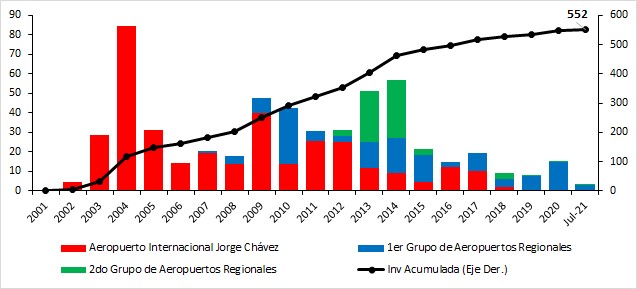
Source: Ositran
A POSITIVE EXPERIENCE
The experience in PPP projects in the Peruvian airport sector has had positive results: First, thanks to private investment, the airport infrastructure has been modernized, which has made it possible to improve the quality of the airport service and boost the Peruvian tourist attraction. In fact, at Jorge Chavez, the apron and passenger terminal areas have multiplied 4 times, going from an area of 200 thousand m2 in 2001 to 820 thousand m2 in 2020. These investments have made it possible to comply with international standards in relation to the time that services are provided and the size of the spaces for passengers (public exit hall, international Boarding pass control, migrations); they have also managed to generate an improvement in the perception of passengers - more than 83% were satisfied with the services provided at the airport - and attract more tourists to the country.
In the regional airports, the investments of both concessions and the operational efficiencies have made it possible to improve the quality of services. Thus, for example, Trujillo, Pucallpa, Tarapoto and Tacna airports have complied with the departure and Check-In Public Hall service levels in accordance with international standards and this has helped the perception of the airport service remains at high levels, above 80% in general.
| General satisfaction level of passengers and companions with AIJCh, by segment, year 2019 | Airport network and tourist attractions |
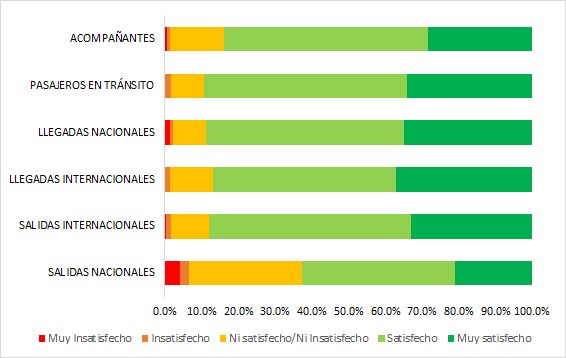 |
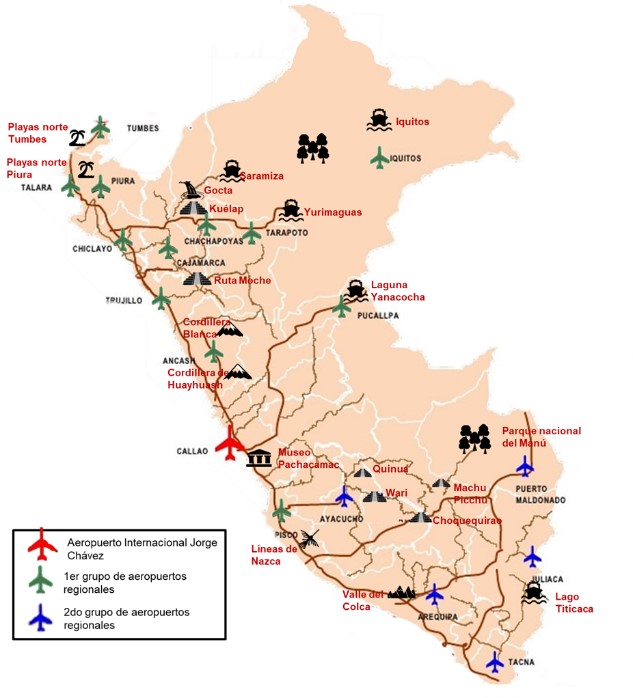 |
| Fuente: Estudio de satisfacción de Pasajeros y Acompañantes en el AIJCh. Noviembre 2019. | Source: Proinversión, Mincetur, Promperu, MTC. |
Second, the modernization of the airports has attracted more tourists. Indeed, the concession of these airports has boosted the take-off of flights number and the flow of passengers. On the one hand, Jorge Chavez grew from 61 thousand flights in 2001 to 198 thousand flights in 2019, and the number of passengers multiplied six (6) times in the same period (from 4 million to 24 million). Thus, these improvements facilitated the arrival of tourists from Asia and South America. For example, between 2011 and 2019, the arrival of tourists from China and Taiwan more than doubled and the arrival of tourists from Indonesia and India multiplied by about 1.7 times. Meanwhile, in regional airports, the flow of passengers has increased steadily, mainly in those that connect with tourist attractions.
| Compensation to the State and Traffic Passengers - Jorge Chávez | Co-financing in the 1º Group of Airports, 2006 - 2019 |
| (In millions of soles / Millions of Passengers) | (Percentage of total income declared by ADP) |
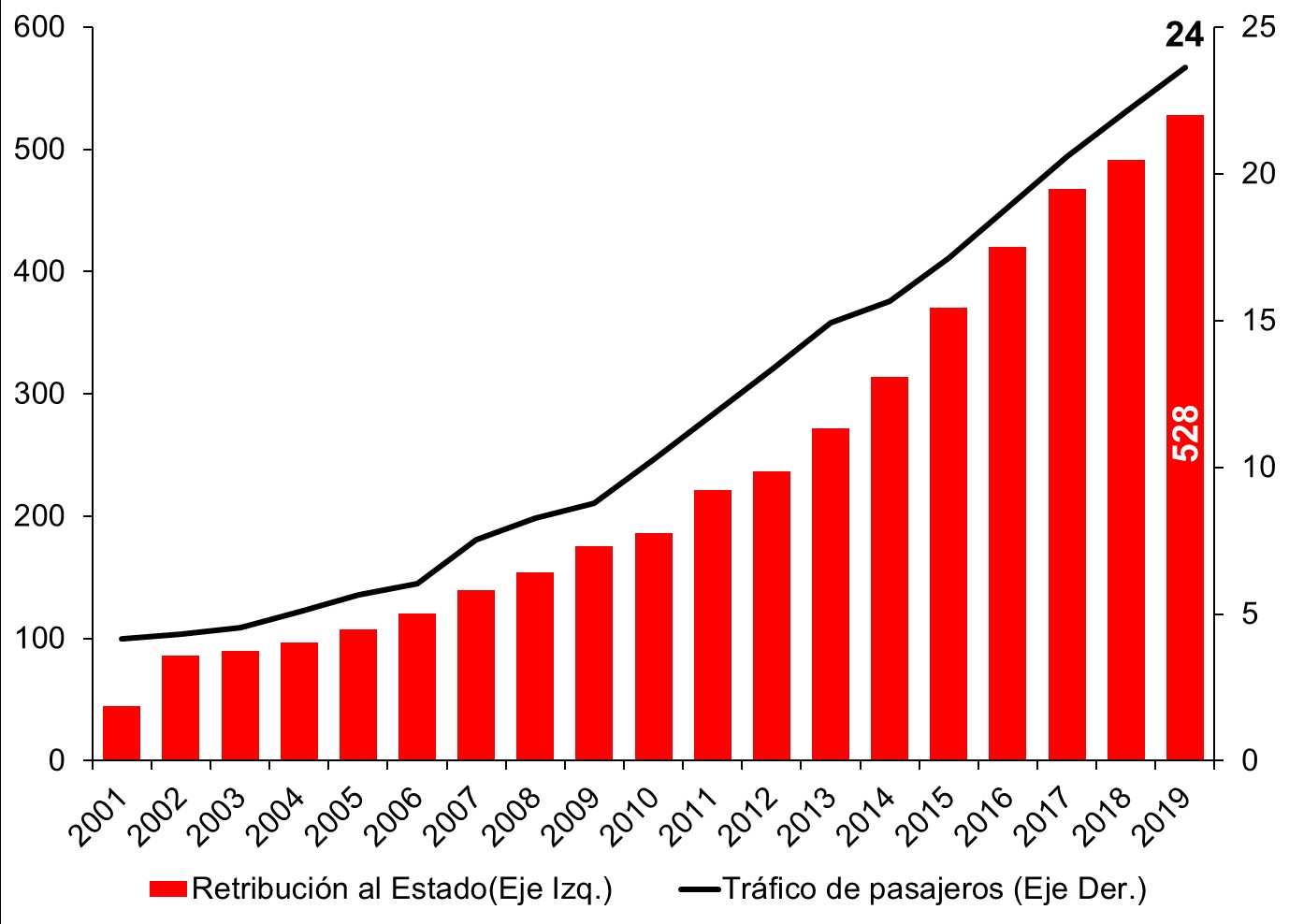 |
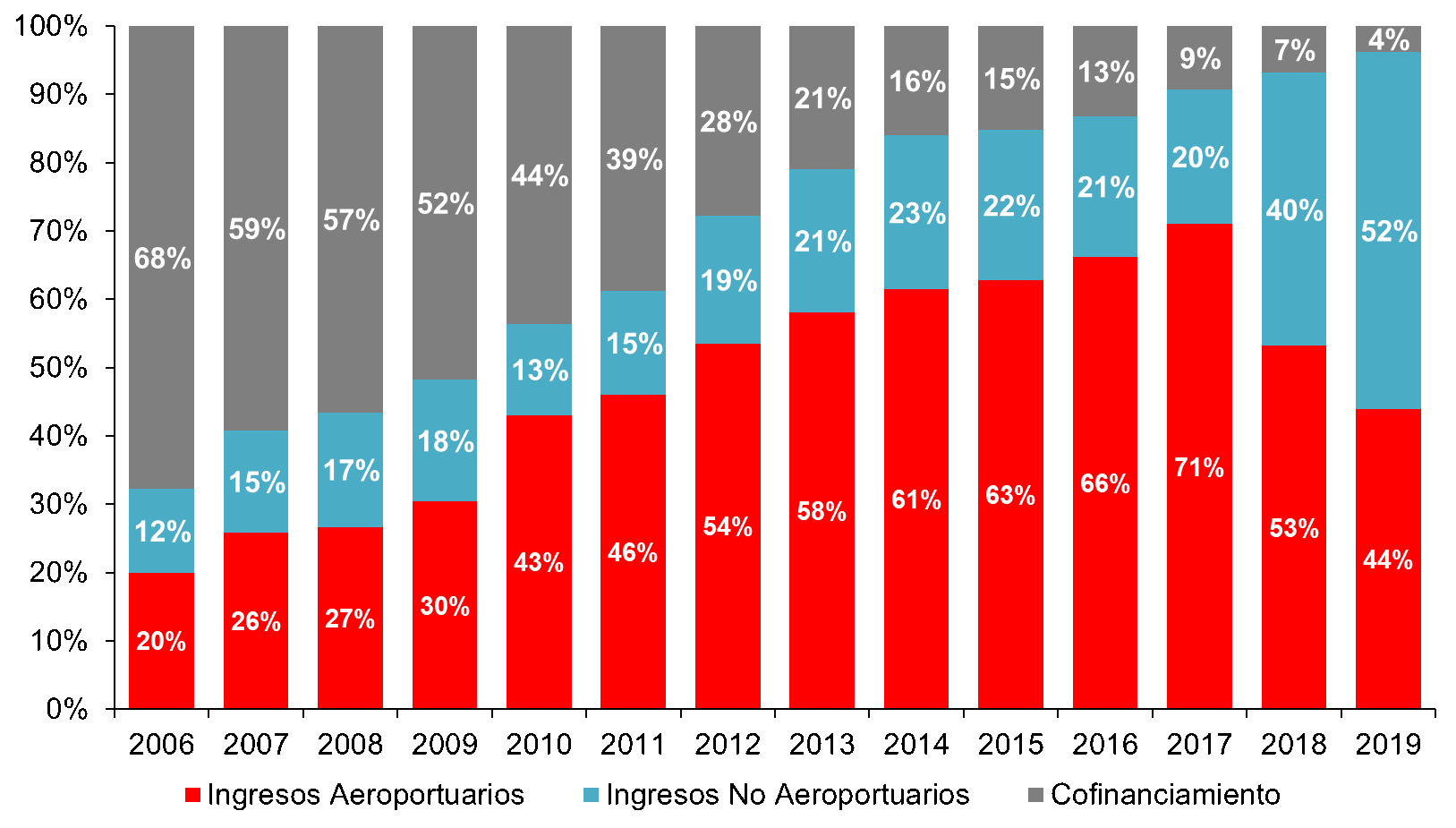 |
| Source: Ositrán | Source: Ositrán |
Third, the modernization of airports has connected the country's regions through a fast and safe transportation system that has attracted more tourists. For example, Chachapoyas Airport, which connects with the Kuélap archaeological complex, grew from 2 thousand passengers in 2008 to 22 thousand in 2019 and Talara airport, which connects with the main beaches in northern Peru, grew from 12 thousand passengers in 2006 to 378 thousand passengers in 2019, an increase equivalent to 31 times.
Fourth, the modernization of these airports had a boosting effect on other related industries such as hotels, resorts, and restaurants. In this way, the flow of tourists in collective accommodation establishments tripled in 15 years, from just over 26 million in 2005 to 83 million in 2019, while the number of accommodation establishments grew just over 9.6 thousand in in 2005 to 23.6 thousand in 2019. This also benefited tourist centers, restaurants, museums, among others, generating a foreign exchange income of US $ 4.784 million in 2019. This same year, the Jorge Chávez Airport ecosystem had an impact of US $ 1.430 million in added value and helped create more than 90 thousand jobs, according to a study carried out by Apoyo Consultoría.
Fifth, air transport has become a safe and fast mechanism for the transport of goods. In fact, today it is the second most used, after maritime, for the trade of certain goods and has made it possible to export textiles and asparagus, as well as import medicines and technology. In 2019, about US $ 9 billion (6% of GDP) was transported by air transport. Likewise, within the country, it facilitates the transfer of goods and services to areas with difficult geographic access, such as the Amazon.
Sixth, the airport concessions have generated significant revenues for the state. LAP, Jorge Chavez Concessionaire, transferred to the Peruvian State in 2019 about S/ 528 million (46.5% of the Income) and with this, the Peruvian State has accumulated more than S/ 4,500 million in income since 2001. On the side of regional airports, they have generated significant savings for the State. Until 2019, the second group has not required co-financing, while the co-financing of the first group was reduced to 3.8% of total income in 2019.
GAP AND INVESTMENTS IN PROCESS
According to the Infrastructure Plan for Competitiveness, Peru has a basic access gap in the transportation sector of S/ 160.9 billion for the next 20 years and in particular, for the airport sector of almost S / 4.2 billion. Likewise, 2019 Global Competitiveness Report indicates that there is still room to improve in the quality of airport infrastructure and places Peru in position 92 out of 141 countries.
To address this gap, it is still remaining the execution of almost US $ 2 billion of committed investments. In particular, the expansion of the Jorge Chavez International Airport will allow having a new air terminal, control tower and the second runway that will enable to meet the growing demand of passengers and improve service levels, and, consequently, increase customer satisfaction of the users. Likewise, some airports in the first group of airports have convened engineering studies for the investments of the second stage in order to initiate new investments in the near future. The second group of airports is beginning a similar process.
For more information on PUBLIC-PRIVATE PARTNERSHIPS, you can visit our promotional website: https://www.investinperu.pe/es/app
Source: Press Release - PROINVERSIÓN

